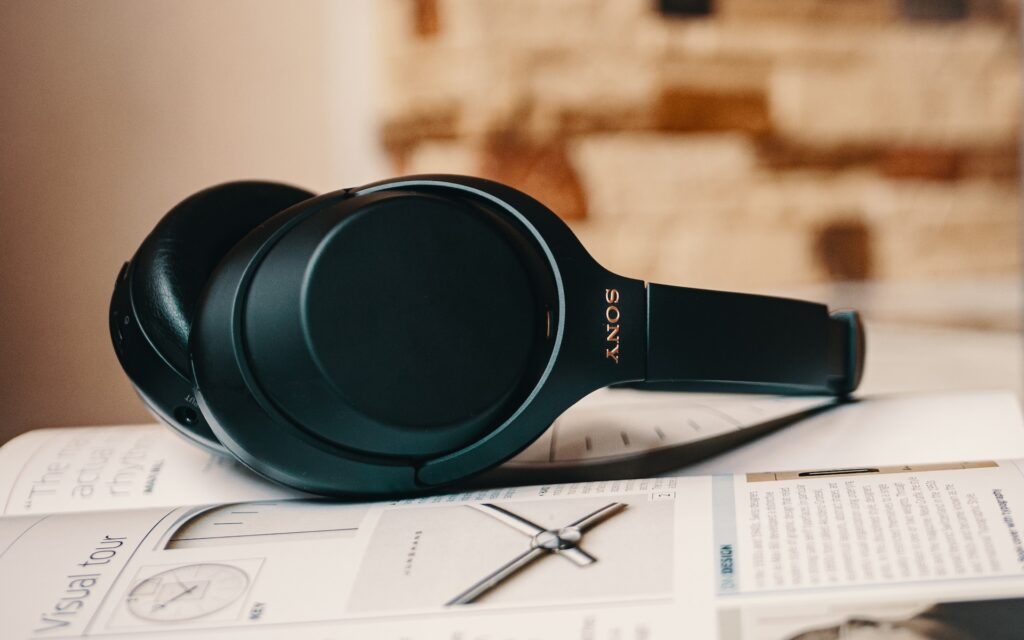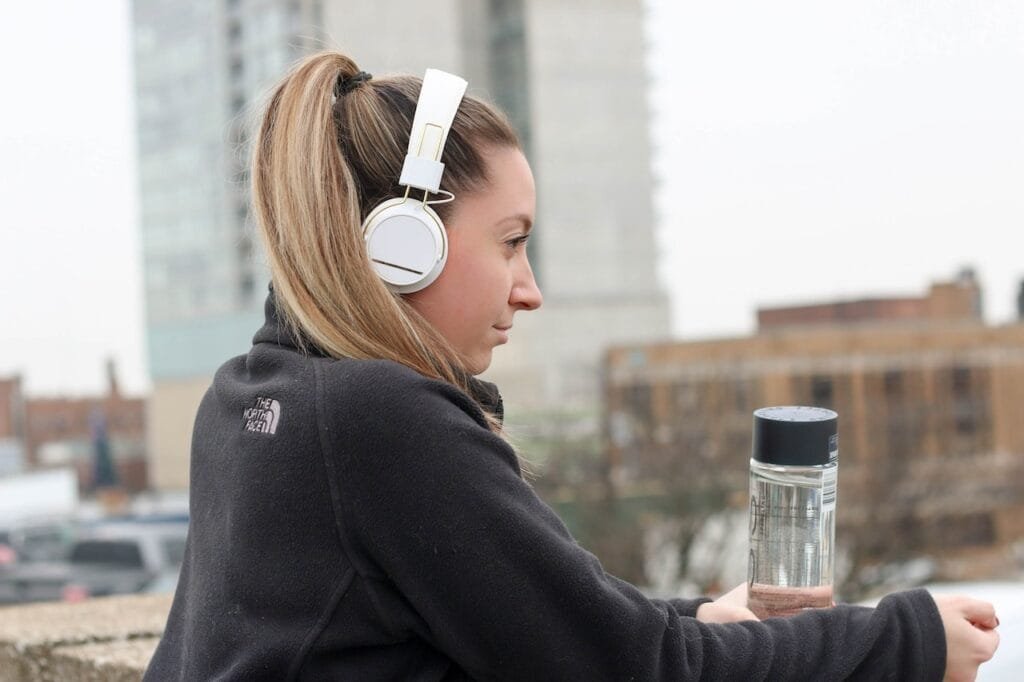Our daily lives would be incomplete without headphones, allowing us to enjoy music, podcasts, and audiobooks without disturbing those around us. However, concerns about the potential damage to our hearing have led many to wonder if listening to low-volume headphones is also harmful. While some argue that even low volume can cause damage, others believe it’s perfectly safe if kept below a certain level.
In this article, we’ll explore both sides of the debate and examine the potential risks and benefits of listening to headphones at low volume.
Table of Contents
How Do Headphones Work?

Headphones are ubiquitous in our modern world. From music lovers to gamers, headphones have become essential to our daily lives. But have you ever wondered how headphones work?
At their core, headphones are a transducer that converts electrical signal into sound waves. This is achieved through a combination of components that deliver sound to our ears.
The first component of a headphone is the driver, which is the part that produces sound. Drivers come in various sizes, usually made up of a diaphragm, voice coil, and magnet. Vibrations of the diaphragm are caused by an electrical current flowing through the voice coil, which generates a magnetic field that interacts with the magnet. These vibrations create sound waves that travel through the air and reach our ears.
The second headphone component is the ear cup, which contains the sound waves the driver produces. Ear cups come in various shapes and sizes and can be made of different materials, such as plastic, metal, or leather. The ear cups are also designed to provide a comfortable fit for the user and to isolate external noise.
The third component of a headphone is the cable, which connects the headphones to an audio source, such as a phone or computer. The cable is usually made of copper or other conductive materials and carries the electrical signal from the audio source to the drivers.
Some headphones include additional components, such as noise-cancelling technology or built-in microphones.
Headphones work by converting electrical signals into sound waves through a combination of drivers, ear cups, and cables, and understanding how headphones work can help us appreciate the technology behind them and make informed decisions when purchasing them.
Is Listening To Headphones At Low Volume Bad?

Many of us love listening to music or podcasts through our headphones, but we may have yet to hear conflicting advice on the appropriate volume level. Some people say listening to headphones at any volume level can damage hearing, while others suggest that listening at low volume is safe. So, is listening to headphones at low volume terrible for our ears?
The short answer is that it depends on how low the volume is and how long we listen. Our ears are susceptible organs, and prolonged exposure to moderate noise levels can cause permanent hearing damage. The World Health Organization recommends limiting our exposure to noise levels above 85 decibels (dB) to protect our hearing.
At a low volume, say, around 60 dB, listening to headphones is unlikely to cause immediate hearing damage. However, if we listen for several hours a day, we could still be at risk of long-term hearing damage.
It is also worth noting that listening to headphones at low volume can lead to us increasing the volume over time to compensate for external noise. This can cause us to increase the volume to a dangerous level unknowingly.
Is It Bad To Wear Headphones All Day At Low Volume?

The use of headphones has become an integral part of our daily lives. They allow us to listen to our favourite music, watch movies, or take calls without disturbing those around us. However, much debate has been about whether wearing headphones all day at low volume is terrible. Here’s a closer look at the problem.
Firstly, it’s essential to understand that prolonged use of headphones can adversely affect our ears. The World Health Organization (WHO) recommends limiting our exposure to sound levels above 85 decibels (dB) for no more than 8 hours a day. Anything above that can cause permanent hearing damage. While listening at low volume may seem harmless, it’s crucial to note that noise-induced hearing loss can occur over an extended period.
Secondly, wearing headphones for prolonged periods can also lead to discomfort and pain. This is because the headphones apply pressure to the ears, causing the blood vessels in the area to constrict. This can result in headaches, ear pain, and even ear infections. Additionally, wearing headphones all day can lead to the buildup of bacteria and moisture in the ear canal, which can cause infections.
Also Read: How To Connect Beats Headphones To PS5
What Is Safe Listening Volume On Headphones?

Headphones are a convenient way to listen to music, podcasts, or other audio content on the go. However, listening to music at a high volume can lead to hearing damage, so it is essential to be mindful of the safe listening volume on headphones.
The safe listening volume on headphones is a level of sound that is not harmful to your hearing. According to the World Health Organization (WHO), listening to music at a volume of 85 decibels (dB) or higher for extended periods can cause hearing damage. To put this into perspective, a normal conversation is typically around 60 dB, while a rock concert can reach 110 dB.
To avoid hearing damage, keeping the volume on your headphones below 60% of the maximum volume level is recommended. This should allow you to hear your music or audio content clearly without the risk of damaging your hearing. Additionally, taking regular breaks from listening to music is recommended, especially if you are using headphones for an extended period.
Another way to protect your hearing while using headphones is to invest in noise-cancelling headphones. These headphones can help to block out external noise, allowing you to listen to your music at a lower volume level.
Choosing the correct type of headphones for your needs is also essential. Over-ear headphones tend to be more comfortable for extended periods of use and are less likely to cause hearing damage than in-ear headphones.
Tips For Wearing Headphones:

Headphones have become an essential accessory for many of us daily. We use them for listening to music to taking calls for various purposes. However, prolonged and loud use of headphones can harm our ears. It can cause hearing loss and other related problems. Therefore, taking precautions to protect our ears while using headphones is essential.
Here are some ways to protect your ears while using headphones:
1. Limit the volume
One of the main reasons for hearing damage is listening to music at a high volume. Therefore, it is essential to limit the volume of your headphones. Experts suggest that listening to music at a volume of 60% or less for a maximum of 60 minutes daily is safe.
2. Take Breaks
Prolonged use of headphones can cause fatigue and damage to your ears. Therefore, it is essential to take breaks while using headphones. It is recommended to take a 5-10 minute break every hour or so to give your ears some rest.
3. Use Noise-Cancelling Headphones
If you use headphones in a noisy environment, you may be tempted to reduce the volume to drown out the background noise. However, this can be harmful to your ears. Using noise-cancelling headphones can help reduce the need for high volume levels, as they block out external noise.
4. Choose Over-the-ear Headphones
In-ear headphones can cause more damage to your ears than over-the-ear headphones, as they are closer to your eardrum. Over-the-ear headphones are a better option as they don’t go inside your ear canal and are less likely to cause damage.
5. Clean your headphones regularly
Headphones can accumulate dirt and bacteria over time, leading to ear infections. Therefore, cleaning your headphones regularly using a soft cloth or a disinfectant wipe is essential.
Can I Use Headphones For 8 Hours?
Headphones have become an essential accessory for many of us. We use them for various purposes, such as listening to music, watching movies, taking phone calls, attending virtual meetings, and more. With the increasing demand for headphones, people are curious about their safety, especially regarding prolonged use.
So, can you use headphones for 8 hours without any harm?
The answer to this question depends on several factors, such as the type of headphones you’re using, the volume at which you’re listening, and the sensitivity of your ears.
Firstly, let’s talk about the type of headphones. There are two types of headphones: over-ear and in-ear. Over-ear headphones cover your entire ear and distribute the sound evenly. They are generally more comfortable for extended periods of use, and there is less risk of ear damage. On the other hand, in-ear headphones sit inside your ear canal and can be more harmful if used for long hours. They can cause earwax buildup, infections, and ear pain.
Secondly, the volume at which you’re listening to your headphones can be a significant factor in determining the safety of prolonged use. Listening to loud music for extended periods can lead to hearing loss and other ear problems. Experts recommend keeping the volume at around 60% of the maximum volume. Also, take regular breaks, and try to use your headphones only for an hour.
Lastly, your sensitivity to sound also plays a crucial role. If you have a history of ear problems or are prone to ear infections, it’s best to limit your headphone use. Similarly, if you’re experiencing any discomfort or pain while using headphones, take a break and consult an audiologist.
Using headphones for 8 hours can be safe if you take the necessary precautions. Use over-ear headphones, keep the volume reasonable, and take regular breaks. However, if you experience discomfort or pain, you must stop using headphones immediately and seek medical attention.
Are Wired Headphones Safer Than Bluetooth?

With wireless technology’s increasing popularity, many wonder whether wired headphones are safer than Bluetooth. The concern arises from the potential health risks of wireless signals emitted by Bluetooth devices.
Wired headphones are relatively straightforward. They have a cable that connects to your audio devices, such as a phone or laptop. On the other hand, Bluetooth headphones connect wirelessly to your audio device using radio waves. This technology emits electromagnetic fields (EMF), potentially harming your health.
However, there is yet to be a clear answer to whether wired headphones are safer than Bluetooth. Both headphones have advantages and disadvantages, ultimately depending on the individual user.
Wired headphones are generally considered safer because they don’t emit EMF signals. With wired headphones, the audio signal travels through the cable, and there is no need for wireless signals. This means that there is no exposure to potentially harmful radio waves.
On the other hand, Bluetooth headphones emit low levels of EMF signals. These signals are generally safe and are similar to those emitted by everyday devices such as microwaves and televisions. Long-term exposure to these signals can potentially harm your health.
It’s essential to note that the health risks associated with EMF signals are still being studied, and there is no conclusive evidence linking them to adverse health effects. Nonetheless, if you’re concerned about the potential risks of Bluetooth headphones, you can take some precautions.
For instance, you can limit exposure to these signals by using wired headphones whenever possible. Alternatively, you can choose Bluetooth headphones with low radiation levels.
Also Read: How To Wear On-Ear Headphones Comfortably
Conclusion:
Listening to headphones at low volume levels can have potentially harmful effects on your hearing. While it may seem harmless, it’s essential to be mindful of the duration and frequency of your headphone usage. Regular breaks and limiting your listening time are recommended to reduce the risk of hearing damage.
However, there are also benefits to using headphones, such as enhancing productivity and improving mood. Ultimately, it’s all about balancing enjoying the benefits and minimizing the risks.
FAQs
Is it safe to listen to headphones at low volume for extended periods?
While low-volume listening is generally safer than high-volume listening, extended use can still cause damage to your hearing. Taking regular breaks and limiting your listening time is essential to reduce the risk of hearing damage.
How do I know if I listen to headphones at a safe volume?
A general rule of thumb is that if someone stands next to you and can hear what you’re listening to, the volume is too high. Keeping the volume at around 60% or lower on your device is recommended.
What are the signs of hearing damage?
Some signs of hearing damage include difficulty understanding conversations, ringing in the ears and a feeling of fullness or pressure in the ears. If you experience any of these symptoms, it is recommended to see a doctor.
Are noise-cancelling headphones safer for my hearing?
Noise-cancelling headphones can be safer for your hearing as they block out external noise, allowing you to listen at a lower volume. However, taking regular breaks and limiting your listening time is still essential.
Can children listen to headphones at low volume safely?
Children are more susceptible to hearing damage than adults, so monitoring their headphone usage and limiting their listening time is essential. It is recommended that children use headphones with volume-limiting features.
